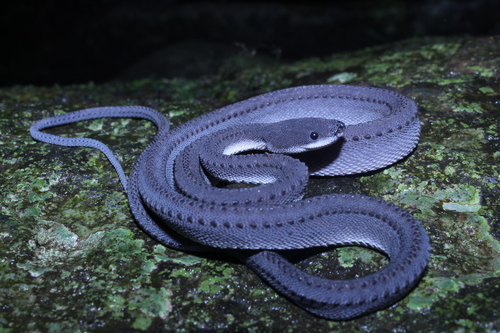
Javan Mudsnake
The Dragon Snake, Xenodermus javanicus, captivates with its dragon-like scales and secretive forest lifestyle. Nocturnal and non-venomous, it thrives in Southeast Asian marshes, coiling defensively when threatened. This enigmatic snake plays a subtle yet vital role in its ecosystem's balance.
10 years
Lifespan
Length: 91 cm
Size
Brown, Grey, Red, White
Color
Low
Aggression
Least Concern
Conservation Status
Increasing
Population Trend
Characteristics
Xenodermus javanicus, or the Dragon Snake, is a nocturnal, non-venomous snake native to Southeast Asia. It boasts a unique, rough-scaled appearance with prominent vertebral ridges, giving it a dragon-like look. Preferring humid environments, it thrives in lowland forests and marshy areas. This species is known for its secretive nature and unusual defensive behavior, coiling tightly when threatened.
Distribution Range of the Javan Mudsnake
Xenodermus javanicus, commonly known as the Javan mudsnake, is native to Southeast Asia. It is primarily found in the regions of Indonesia, Malaysia, and Thailand. Its distribution is predominantly in lowland tropical forests and swampy areas within these countries.
Javan Mudsnake's Habitat
Environmental Conditions
The Javan mudsnake inhabits tropical and subtropical moist lowland forests, as well as freshwater swamp forests. These environments are characterized by high humidity, abundant rainfall, and warm temperatures, typically ranging from 25°C to 30°C (77°F to 86°F). The regions have dense vegetation, providing ample cover and hunting opportunities for the snake.
Ecological Niche
Xenodermus javanicus occupies a specialized ecological niche as a semi-aquatic snake. It is adapted to moist and swampy environments, where it primarily preys on small amphibians and fish. The snake is nocturnal, using its cryptic coloration to blend in with the forest floor and water bodies, which assists in both predation and avoiding predators.
Copyright @ Nature Style Limited. All Rights Reserved.
 English
English